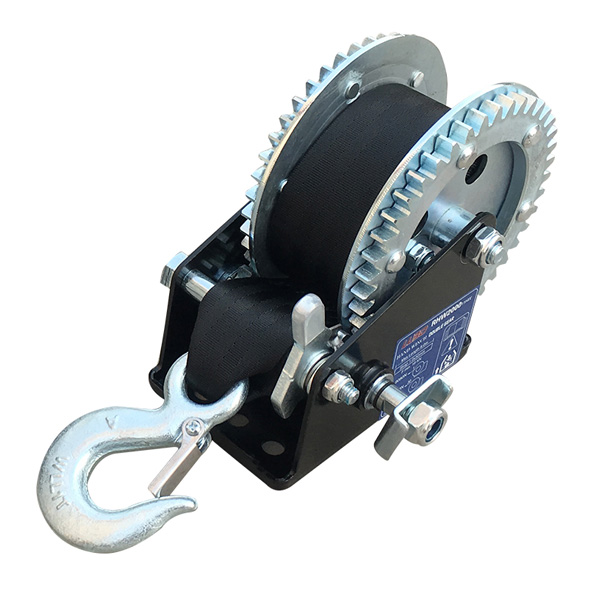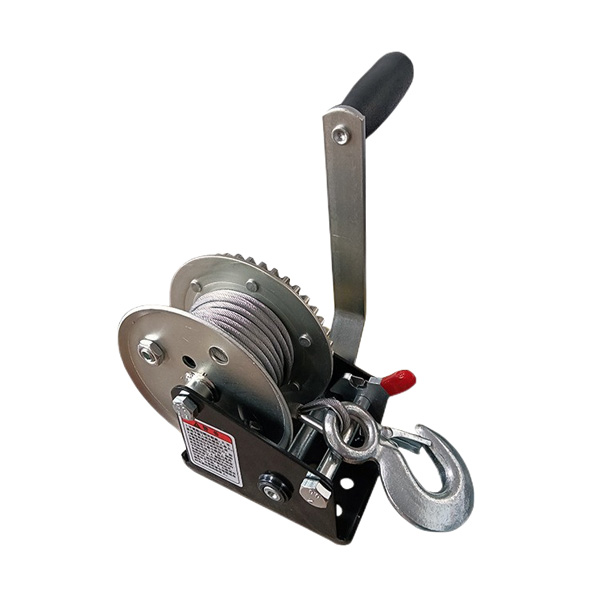
Introduction to Manual Winch Safety
Manual winches are widely used for lifting, pulling, and securing heavy loads in industries such as off-road recovery, construction, and marine applications. While they are simple and reliable tools, improper operation can lead toserious accidents, equipment damage, or personal injury. This safety guide highlights common operating errors and provides best practices for safe and efficient manual winch use.


Common Operating Errors to Avoid
1. Overloading the Winch
Attempting to lift or pull loads beyond the winch’s rated capacity can lead to cable snapping, gear failure, or handle breakage.
Safety Tip:
· Always check the winch’s load rating before use.
· Factor in safety margins and avoid maxing out the winch capacity.
2. Incorrect Anchoring
Securing the winch to an unstable or improper anchor point can cause the anchor to fail, resulting in sudden load release.
Safety Tip:
· Use strong, stable anchors such as vehicle frames, heavy-duty posts, or trees rated for the load.
· Inspect anchor points for stability before applying force.
3. Poor Cable Management
Twisted, kinked, or frayed cables reduce winch efficiency and increase the risk of snapping under load.
Safety Tip:
· Inspect cables before every use.
· Rewind the cable evenly and avoid overlapping or tangling.
· Replace damaged cables immediately.
4. Operating Without Protective Gear
Handling winch cables and heavy loads without gloves or protective equipment can result in cuts, burns, or crush injuries.
Safety Tip:
· Wear gloves, safety glasses, and sturdy footwear.
· Keep loose clothing and jewelry away from moving parts.
5. Improper Handling of the Winch Handle
Releasing the handle too quickly or applying uneven force can lead to loss of control or sudden recoil.
Safety Tip:
· Turn the handle smoothly and maintain a firm grip.
· Use a consistent, steady pace when cranking.
6. Ignoring Environmental Conditions
Wet, icy, or unstable surfaces can affect traction and winch stability, increasing the risk of accidents.
Safety Tip:
· Ensure stable footing and secure vehicle positioning.
· Avoid operating on slippery or uneven surfaces whenever possible.


Best Practices for Safe Manual Winch Operation
1. Read Manufacturer Instructions
Always follow guidelines provided in the manual for proper use, maintenance, and load limits.
2. Inspect the Winch Regularly
Check gears, handles, cables, and mounting points for wear or damage before each use.
3. Use Appropriate Load Guides and Accessories
Employ pulleys, snatch blocks, or load distribution systems to reduce strain and improve control.
4. Maintain Clear Communication
When operating in teams, establish clear signals and maintain visual contact with all personnel involved.
5. Train Users Properly
Ensure all operators understand winch mechanics, load limits, and emergency procedures.
6. Store and Maintain Correctly
Keep the winch in a dry, protected environment to prevent corrosion. Lubricate moving parts periodically for smooth operation.
Conclusion: Prioritizing Safety with Manual Winches
Manual winches are effective and versatile tools, but safety must always come first. By avoiding common operating errors, using protective gear, and following best practices, operators can prevent accidents, extend the life of the winch, and ensure reliable performance. Proper training and maintenance are key to safe and efficient manual winch operation.
Meta Description:
Learn how to safely operate manual winches with this guide. Discover common errors, safety tips, and best practices to prevent accidents and ensure efficient, reliable winch use.





